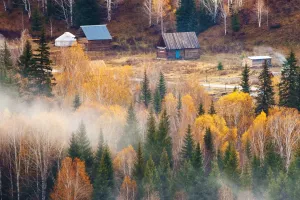The Netherlands is very close to the sea. It is a coastal country located in the northwest of Europe, adjacent to Germany and Belgium. The Netherlands is full of windmills, so it is called the kingdom of windmill.
There are millions of windmills in this country. In fact, windmills were not invented by the Dutch, nor are they unique to the Netherlands. There are many windmills in other European countries, but the number is far from that of the Netherlands.
Windmills in the Netherlands were first introduced from Germany, and since then, windmills have quickly become popular in the Netherlands, because windmills are particularly suitable for the geographical environment of the Netherlands. The Netherlands is located in the northwest of Europe, where the westerly winds prevail all year round and the wind is abundant. Originally windmills powered handicraft production.
During the Renaissance, the Netherlands, known as the sea coachman, once became the European raw material processing and transshipment center, which was attributed to the windmills. Large numbers of windmills are concentrated near ports such as Rotterdam and Amsterdam, powering mills, sawmills and paper mills.
Windmills are of particular significance to the Dutch economy. In the sixteenth century, the Netherlands took the leading position in the world's commerce. Various raw materials were transported from various waterways to windmill processing, including lumber from the Nordic countries and the Baltic countries, hemp and flax seeds from Germany, and cinnamon and pepper from India and Southeast Asia. In the outskirts of Rotterdam and Amsterdam, the great port of the Netherlands, there are many windmills, sawmills, and paper mills. With the large-scale development of the Dutch people's reclamation project, windmills have played a huge role in this arduous project. The first is to equip the windmill with a movable canopy, and they install the windmill canopy on the rollers. This type of windmill is called the Dutch windmill.
The Dutch also use windmills for one big thing, which is drainage. The Netherlands is a country with a particularly low terrain and many rivers and lakes. For the Netherlands, flooding has become a particular nuisance, and if the floodwaters inundate low-lying land, the stagnant water must be drained. Windmills, on the other hand, can pump water from lower places to higher river channels. In addition to eliminating floods, the Dutch also took the initiative to drain the swamps and lakes with windmills and transform the lakes into fertile fields.
Today, although the glorious era of windmills has long passed, as a witness to history, windmills have become the iconic landscape of the Netherlands. The Dutch set the second Saturday of May every year as the Windmill Festival, and various celebrations are held on this day.
Kinderdijk-Elshout Village is about 8 kilometers away from Amsterdam, the capital of the Netherlands. There are 19 windmills built in the 1730s and 1840s, forming the largest group of windmills in the world today. Each windmill is a windmill tower house, conical in shape, with walls sloping from top to bottom. The 4 rectangular wings of the windmill are fixed on the windmill on the top of the tower house. The tower house is divided into several floors, which are used for sleeping and eating. Some families have lived in the windmill tower house for 245 years. The Kinderdijk windmill, which is open to the public on Saturdays in July and August every year, is a major tourist attraction in the Netherlands.
For a long time, no matter from which angle people looked at the Dutch landscape, they always saw the windmills erected on the horizon. Windmills are some of the bests in the Netherlands with its wide horizon and stunning cloudscapes. Windmills are the pride and symbol of the Dutch nation, as well as the inheritance and publicity of Dutch culture. From the front, the windmill is shaped like a vertical cross, and even when it is resting, it still looks dynamic, as if it were about to turn the earth. This impression left an indelible memory on the people who came here, and finally understood why people called the windmill the "national trademark" of the Netherlands.


